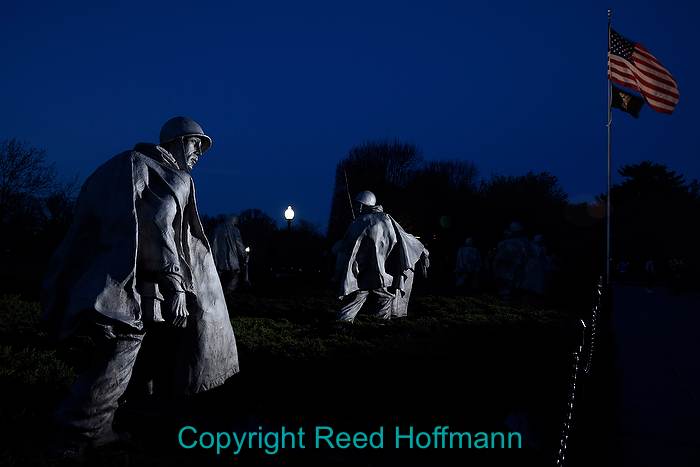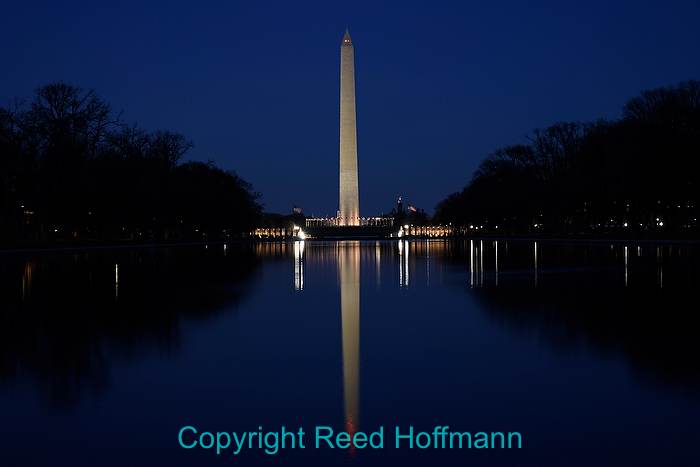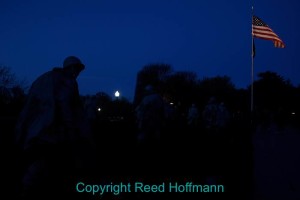As long as I can remember, I’ve loved visiting Washington, DC. First it was for museums like the Smithsonian, then after I got into photography it was to take pictures. One of my favorite places to do that now is on the National Mall, especially after dark. Which is where I was Friday night.
Most people don’t take pictures at night, which is a shame. The lack of light can be an advantage. Our eyes are drawn to areas of brightness, so as long as the light is on the subject, that’s great. The surrounding darkness makes that subject stand out even more. Which means there are two main issues when doing night photography. First, the light needs to be where you want it. Second, there’s usually not much light, which means you have to careful with exposure. Here’s how I worked with both of those.
Real thought went into designing the lighting on the Mall, and we should all be thankful. That’s one reason it’s so beautiful at night. But that doesn’t mean the light’s everywhere you might want it. Understanding that, and knowing how to supplement it, is important in getting the picture you want. I’d do that with both a flash and my phone.
One of my favorite spots is the Korean War Veterans Memorial. The statues of soldiers climbing uphill in winter is a haunting reminder of what they suffered through. I’d been there before, and knew the photo I wanted to make. But I also knew there wasn’t enough light for it, so I brought along a Nikon SB-700 speedlight (and a friend to hold it). Crouching at the edge of the walkway, I set my exposure manually to just show the fading sky and flag waving in the breeze. Then I used the built-in flash on my Nikon D7200 in Commander mode to fire the flash my friend was holding off to the right.

With the same exposure, but now adding a flash from the right side, I was able to light up the statues while still keeping the feel of dusk. Nikon D7200, Manual exposure, ISO 320, 1/15 at f/5.6, EV -0.7, Flash white balance, Nikkor 16-85mm f/3.5-5.6 lens at 16mm. Photo copyright Reed Hoffmann.
From there we walked to the nearby Vietnam Veteran’s Memorial. Another sober reminder of the costs of war, once again I already knew the photo I hoped to make. If I could find some flowers along its east-facing path, I’d be able to have those in the foreground, with the wall of names fading off to the Washington Monument. There was just bunch in the right area, but they fit the bill perfectly. Because of the low light there, I’d have to raise my ISO higher than I’d like to make that picture (which would result in digital “noise’ in the photo). And that’s why I’d brought a small tripod along on the trip. I’d need to do a time exposure.
Compact tripods usually aren’t a good choice for photography. Lightweight, with thin legs, when extended they’re wobbly. Which results in blur when used for long exposures. But if you keep them low to the ground and are careful, they can work just fine. So that’s what I used for the 15-second exposure.
The last piece of the puzzle was the fact that the Washington Monument was brighter than the light on the flowers. Since dimming the monument wasn’t an option, the only answer was to add light to the flowers. With that long exposure (15-seconds), the easy way to achieve that was to light-paint it. Going low-tech, I used the flashlight built into my iPhone. Cupping both hands around it to create a narrow beam of light, I simply “painted” a few seconds of it onto the flowers and surrounding wall. That was all I needed to bring the light level up to snuff.

The Vietnam Veteran’s Memorial is even more powerful when viewed at night. Nikon D7200, Aperture Priority, ISO 200, 15 at f/5.6, EV 0.0, Sunlight white balance, Nikkor 16-85mm f/3.5-5.6 lens at 16mm. Photo copyright Reed Hoffmann.
We went to the Mall in late afternoon and spent several hours walking the grounds. There were lots of nice pictures to be made at the Jefferson, Martin Luther King and Lincoln Memorial in daylight. But my favorites were those taken after sunset, and each had challenges. All that was needed was realizing they just needed a little light added in the right place. With that, I had some beautiful photos. The key was that it was dark out. In photography, lack of light can actually be a good thing. And that’s why I love doing night photography.
(If you like this story, please share it with your friends, and also let them know about the links about photography I post on my business Facebook page)


